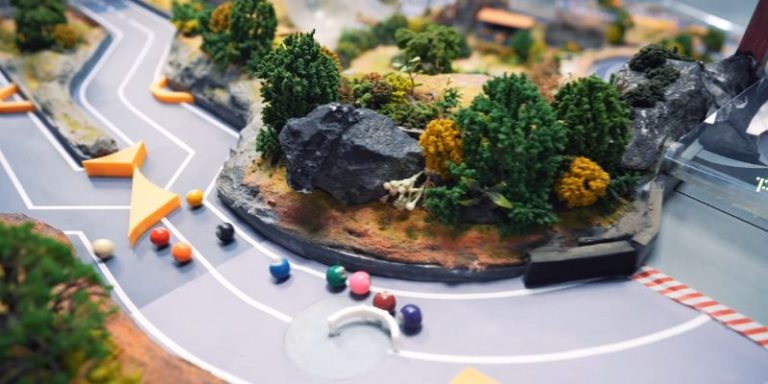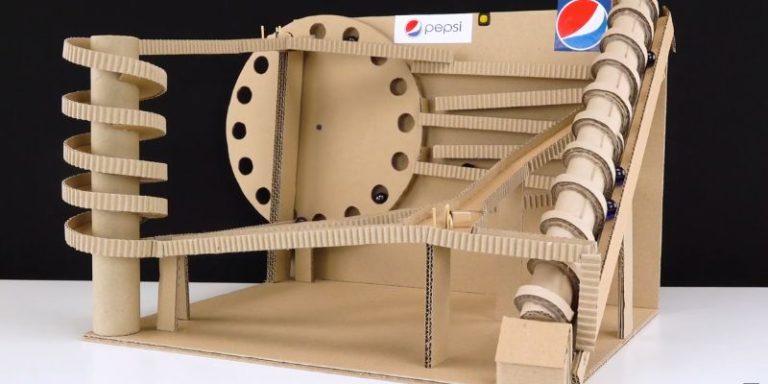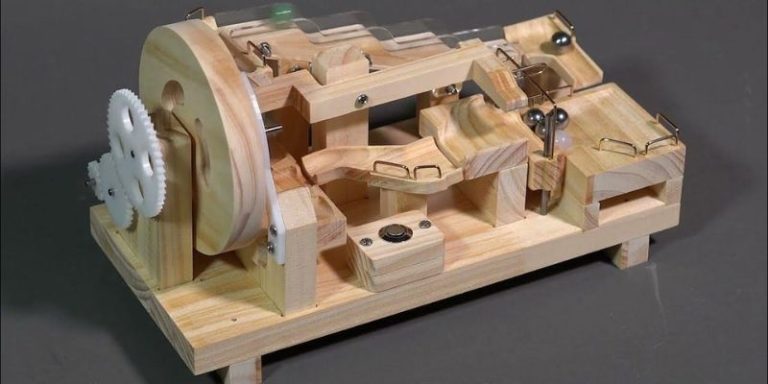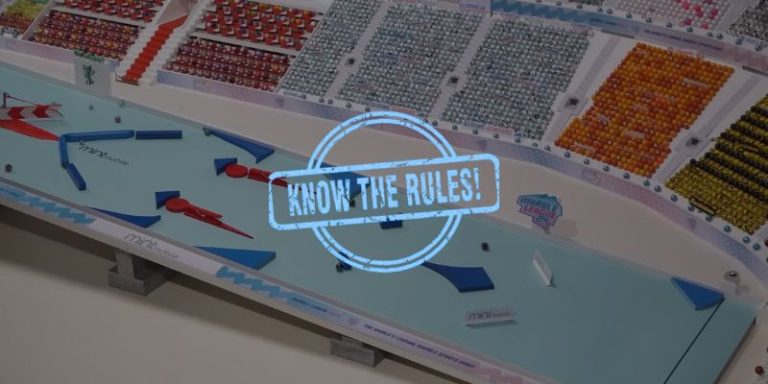Easy to Advanced Marble Run Design Ideas for Every Builder
Marble runs are the ideal combination of creativity, engineering, and hands-on enjoyment. Whether you are a curious newbie, a DIY enthusiast, a teacher bringing STEM to life, or a serious builder looking for a challenge, this guide is for you. Inside, you will find various marble run design ideas, from simple to complex, that will pique your interest, explain fundamental concepts, and provide hours of racing pleasure. Let’s create something extraordinary one track at a time.
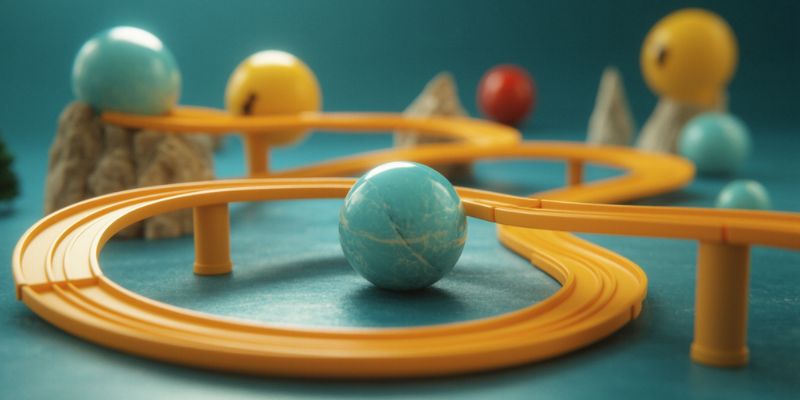
Getting started
Before you begin designing, gather the necessary supplies. These simple tools and resources will get you started quickly.
Basic Materials
Begin with the necessary supplies: standard marbles (16mm is excellent), cardboard, scissors, glue, and tape. These are inexpensive and easy to find. With just these, you may already construct ramps, chutes, and rudimentary constructions that propel marbles from point A to point B.
Optional Upgrades
Do you want more speed, durability, or creative flexibility? Consider adding plastic tubes, wooden rails, modular track sections, or foam boards. Even everyday items like paper towel rolls, straws, and pool noodles can be converted into excellent components. These enhancements extend the duration of your runs and make them look even more remarkable.
Space Considerations
It is essential to consider where you are building. A tabletop setup is ideal for prototyping ideas and developing small-scale designs. If you want something more spacious, go floor-based, with wider arcs and more excellent loops. Are you feeling bold? Try a vertical wall-mounted run. These are eye-catching and ideal for classrooms or creative home environments; ensure everything is safe.
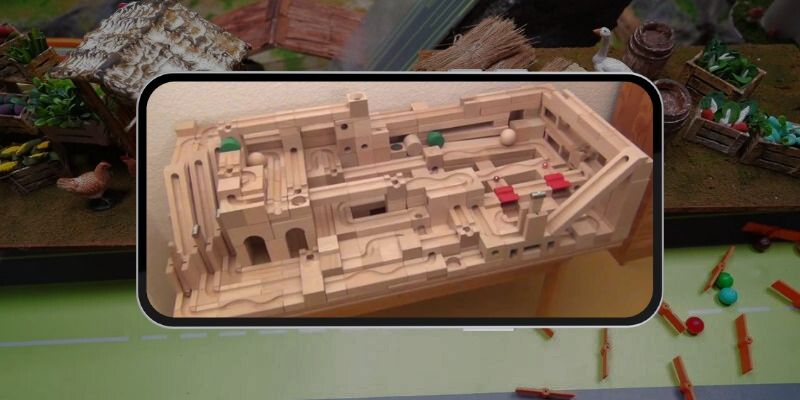
Regardless of your arrangement, the objective is to experiment and have fun. The more you experiment with materials and layouts, the more enjoyable your marble runs will be.
Easy marble run design ideas (Beginner level)
Just getting started with marble runs? These simple designs are ideal for learning the fundamentals of marble motion, gravity, and creative building with materials you already have at home.
Simple Gravity Drop Track
This is the most straightforward method for explaining how marble runs function. Use a long piece of cardboard or a smooth board held at an angle. Allow marbles to roll from the top and observe how gravity works. There are no obstacles—only pure speed. This method is ideal for young children or first-time builders who require quick results.
Cardboard Tube Run
The paper towels and toilet paper rolls are marbled gold. Cut them in half lengthwise to make open chutes, then tape them together and slant them downward against a wall, chair, or table. You can also add curves or short dips for diversity. This is an excellent method for repurposing resources while producing an unexpectedly enjoyable course.
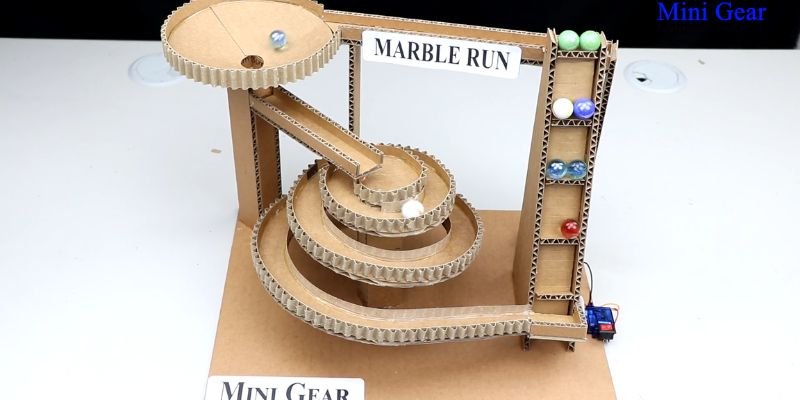
Shoe Box Slide Track
Take a shoebox, cut slits on the sides, and slide short cardboard ramps from one side to the other in a zigzag pattern. Create a hole at the top for the marble entry and another at the bottom for the finish. This design is tiny, portable, and ideal for racing many marbles on the go.
Intermediate marble run designs (builder level)
Ready to level up your builds? These intermediate marble run designs introduce new complexity, creativity, and control layers. They’re perfect for hobbyists who want more than a straight shot to the finish line.
Multi-Level Ramp System
Create a multi-level course by stacking platforms made of boxes, books, or blocks. Connect levels using ramps that bend or zigzag down to the next tier. This introduces elevation changes and promotes smoother transitions. It also prompts you to consider how marbles sustain motion over extended distances.
Funnel & Spiral Drop Section
Add a funnel at the top or middle of your run—a bowl, wide bottle top, or cut-out cup works great. Marbles swirl inside before dropping through the center, creating suspense. You can follow it up with a spiral ramp made from coiled tubing or curved cardboard to keep the motion dramatic and unpredictable.
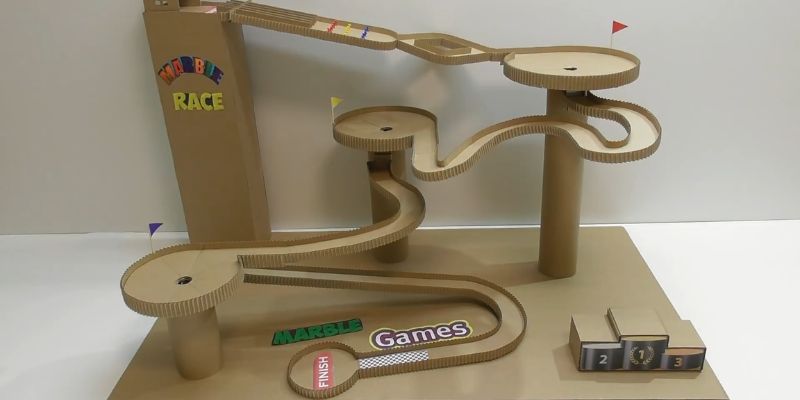
Switch Tracks and Split Paths
Split pathways add a layer of options to your design. Allow marbles to come to a fork and choose between going left or right, with each path leading to different challenges or obstacles. Make switch tracks that alternate routes with each new stone to add a variation. It adds strategy, randomness, and much replay value to your run.
Advance marble run design ideas (Pro level)
These complex marble-run design ideas will let you stretch your imagination and engineering talents to their limits. These aren’t simply tracks; they’re experiences. These designs blend precision, ingenuity, and storytelling to provide the best marble racing experience.
Obstacle-Based Race Track
Create a tough course featuring marble jumps, whirling spinners, bumpers, swinging gates, and tilting bridges. Add motion and unpredictability by using elastic bands, small motors, or simple levers. The idea is to test speed, agility, and control, just like on a real racetrack with unexpected twists and turns.
Modular Wooden or Plastic Track System
Purchase (or create) a modular system composed of wooden slats, plastic connectors, and pre-cut ramps. With interchangeable pieces, you may easily reconfigure your track for new layouts at any moment. Add vertical lifts or drop towers connected by pulleys or gears to create multi-lap circuits. It is a scalable, professional-level strategy that combines DIY enjoyment with long-term viability.
Theme-Based Adventure Tracks
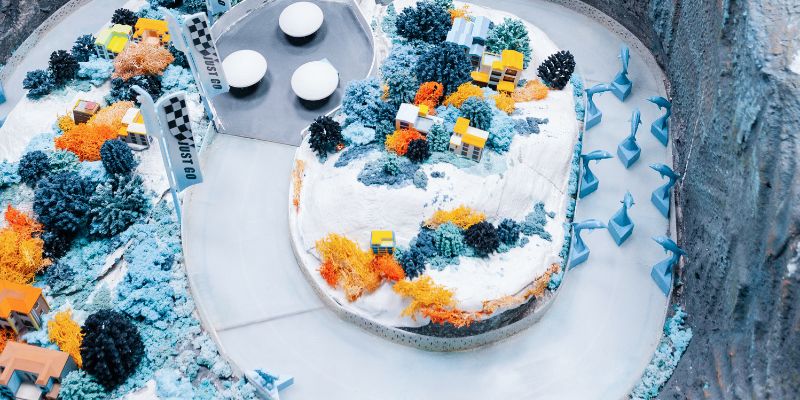
Transform your run into a tale. Create a jungle adventure with leafy tunnels and secret animal cutouts, a volcanic escape with scorching lava jumps, or a frozen mountain trail with snowflakes and freezing slides. Make your setting come alive using paint, props, lighting, and sound effects. This style combines creative and immersive design, which is ideal for showcasing races or video material.
Bonus ideas for educational and STEM designs
Marble runs are more than just a fun activity; they are also effective teaching instruments. With the appropriate technique, any marble track can be transformed into a hands-on STEM learning environment that teaches engineering, physics, and critical thinking.
Incorporate Simple Machines
Add inclined planes (slopes), levers (see-saws), and pulleys (marble lifts) to investigate how rudimentary machines work. These mechanics show force, motion, and cause-and-effect in real-time, making abstract topics more tangible and enjoyable.
Teach Physics in Action
Use your track to demonstrate how friction slows marbles on uneven surfaces, gravity pulls them down slopes, and momentum propels them through loops and curves. You can experiment with marble weight, size, and material to discover how these factors affect speed and distance.

Perfect for Classrooms or Homeschooling
Whether you’re a teacher seeking an interesting classroom exercise or a parent conducting DIY science at home, marble runs make learning more dynamic and memorable. Please encourage students to create, test, and refine their tracks like professional engineers and scientists do. It’s a game-based approach to learning with lasting consequences.
Tips to improve your marble run designs
Do you want your marble run to work better and look cooler? These fast techniques will transform your setup from simple to spectacular—no pricey gear necessary.
Test Early, Test Often
Please do not wait until the entire track is completed to test it. After adding each new section, run a marble to ensure smooth transitions and no unexpected slow places. Minor adjustments along the road can prevent massive headaches later.
Secure Wobbly Sections
Loose parts are the antithesis of momentum. Secure pieces with tape, glue, or connectors. A stable track keeps the marbles moving, preventing derailments in tight corners or steep dips.
Add Color & Style
Marble runs are as fun to look at as they are to race. Use paint, markers, or colored paper to decorate your track. Want to go further? Give your run a theme—like Outer Space, Jungle Adventure, or Candy Land—and make it visually pop!
Sharing your creations with the world
Instead of collecting dust, show off your fantastic marble run! Recording your builds and races is an excellent way to measure your progress, motivate others, and relive your most memorable runs. A simple phone camera works fine; ensure the lighting is acceptable and the track is focused.
Instead of collecting dust, show off your fantastic marble run! Recording your builds and races is an excellent way to measure your progress, motivate others, and relive your most memorable runs. A simple phone camera works fine; ensure the lighting is acceptable and the track is focused.
Feeling competitive? Enter a challenge or create your own! There is always room to encourage inventiveness through speed runs or themed design contests. And if nothing is happening in your group, start a local or online tournament—you never know who will show up to join the fun.
FAQ about marble run design ideas
Where can I find simple marble run design ideas for beginners?
Try cardboard tubes, shoebox zigzags, and gravity ramps—perfect for first-time builders.
What are good marble run design ideas for school projects?
What are good marble run design ideas for school projects?
Can marble run design ideas be used for STEM education?
Absolutely. They teach physics concepts like gravity, momentum, and friction in a hands-on way.
